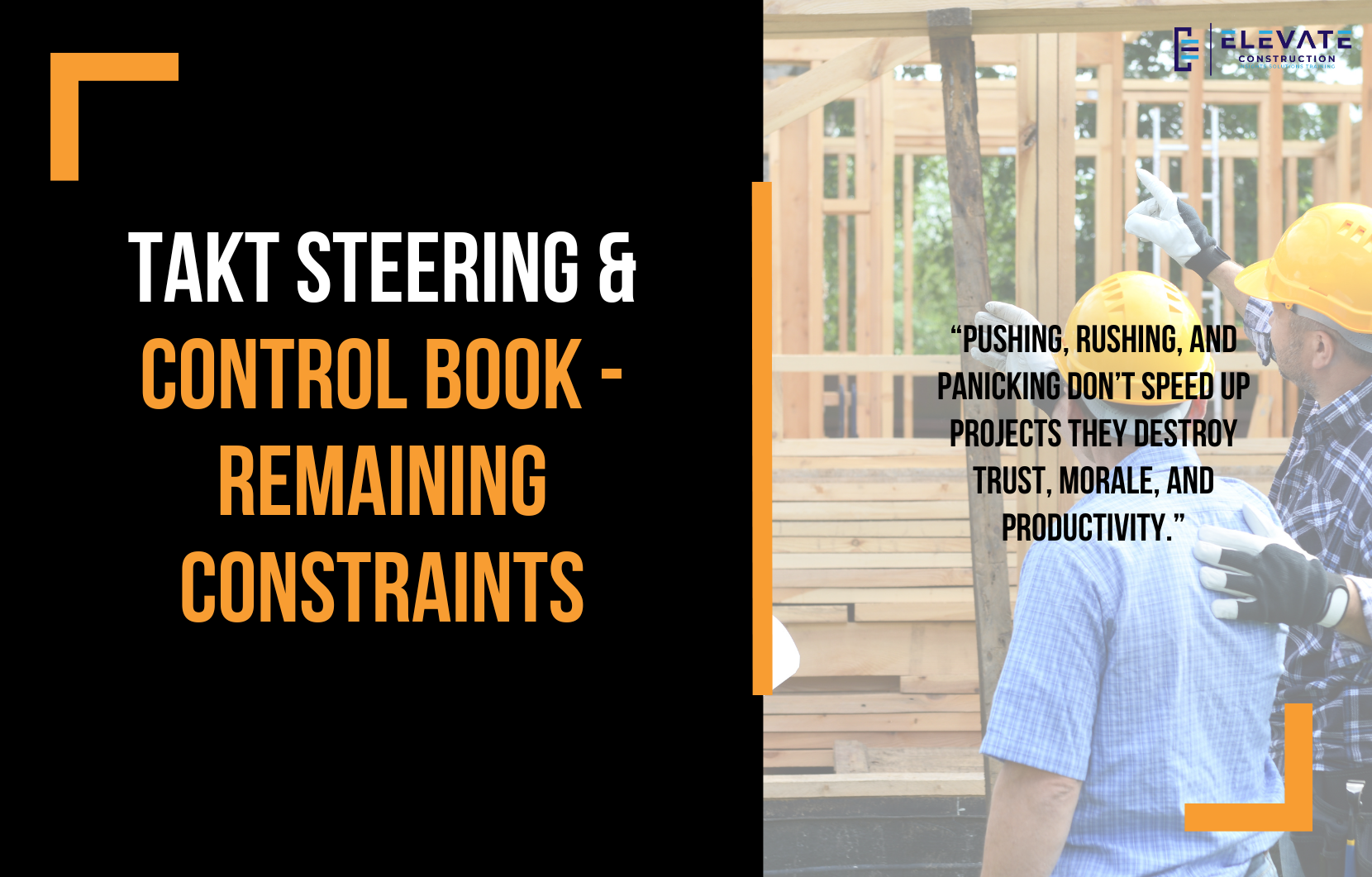How to Build Flow and Avoid Productivity Loss
In this blog, we’re finishing out the section on constraints so we can move forward into the next topic “roadblocks”.
Let’s start with one of the biggest productivity killers in construction, pushing, rushing, and panicking.
Many leaders believe pushing the team to go faster gets results but in reality, it’s like trying to put out a fire with gasoline. Rushing leads to delays, mistakes, burnout, and worse: a culture of fear. Panic never creates solutions it only multiplies stress, clouds judgment, and breaks down communication. When stress lingers, morale drops, trust erodes, and talented people start looking for the exit.
Flow vs Chaos
To move beyond this destructive cycle, we turn to the theory of constraints, developed by Dr. Eliyahu Goldratt and expanded by Dr. Efrat Goldratt Ochlag. At its core, this framework teaches that every organization has at least one constraint limiting its performance. The key is to identify and manage that constraint so the entire system improves.
Goldratt’s Five Focusing Steps outline this process:
- Identify the constraint: Find what limits system performance.
- Exploit the constraint: Maximize its capacity.
- Subordinate everything else: Align all processes to support it.
- Elevate the constraint: Increase capacity if necessary.
- Repeat the process: Once resolved, move to the next constraint.
This is why it’s critical to distinguish constraints from roadblocks. Constraints can be managed using the five steps. Roadblocks, on the other hand, have no capacity to exploit or elevate they must simply be identified and removed. Mixing up these terms can derail your problem solving efforts.
Why Flow Matters
When flow is disrupted, productivity tanks. Batch processing slows things down compared to smooth, continuous one-piece flow. If a slow trade becomes your bottleneck, that trade should never be left waiting on materials, equipment, or information. Instead, it must become the focus, because your project will always move at the speed of its constraint.
Leaders must shift from firefighting on the critical path to focusing on constraints and designing with them in mind. That’s how you maintain flow, reduce delays, and keep projects moving forward.
Fear of Court Cases
Another hidden constraint is fear of litigation. Some organizations cling to CPM scheduling to protect themselves legally but in doing so, they constrain their entire company with a broken system. The truth is, CPM doesn’t keep projects on track. Instead, it often creates more problems than it solves.
Seeing Constraints Clearly
At the end of the day, building flow is about visibility. Once you train yourself to see constraints whether resource issues, misaligned zones, overburden, or panic you’ll anticipate problems before they derail your project. Over time, even AI will play a role in identifying constraints faster than humans can. But for now, your ability to see and respond is the key to elevating performance.
Key Takeaway
Pushing, rushing, and panicking don’t speed up projects they destroy trust, morale, and productivity. True progress comes from identifying and managing constraints using Goldratt’s five steps, while removing roadblocks outright. When leaders focus on flow instead of firefighting, projects run at the pace of their strongest constraint and that’s how construction teams elevate performance.
If you want to learn more we have:
-Takt Virtual Training: (Click here)
-Check out our Youtube channel for more info: (Click here)
-Listen to the Elevate Construction podcast: (Click here)
-Check out our training programs and certifications: (Click here)
-The Takt Book: (Click here)
Discover Jason’s Expertise:
Meet Jason Schroeder, the driving force behind Elevate Construction IST. As the company’s owner and principal consultant, he’s dedicated to taking construction to new heights. With a wealth of industry experience, he’s crafted the Field Engineer Boot Camp and Superintendent Boot Camp – intensive training programs engineered to cultivate top-tier leaders capable of steering their teams towards success. Jason’s vision? To expand his training initiatives across the nation, empowering construction firms to soar to unprecedented levels of excellence.
On we go

